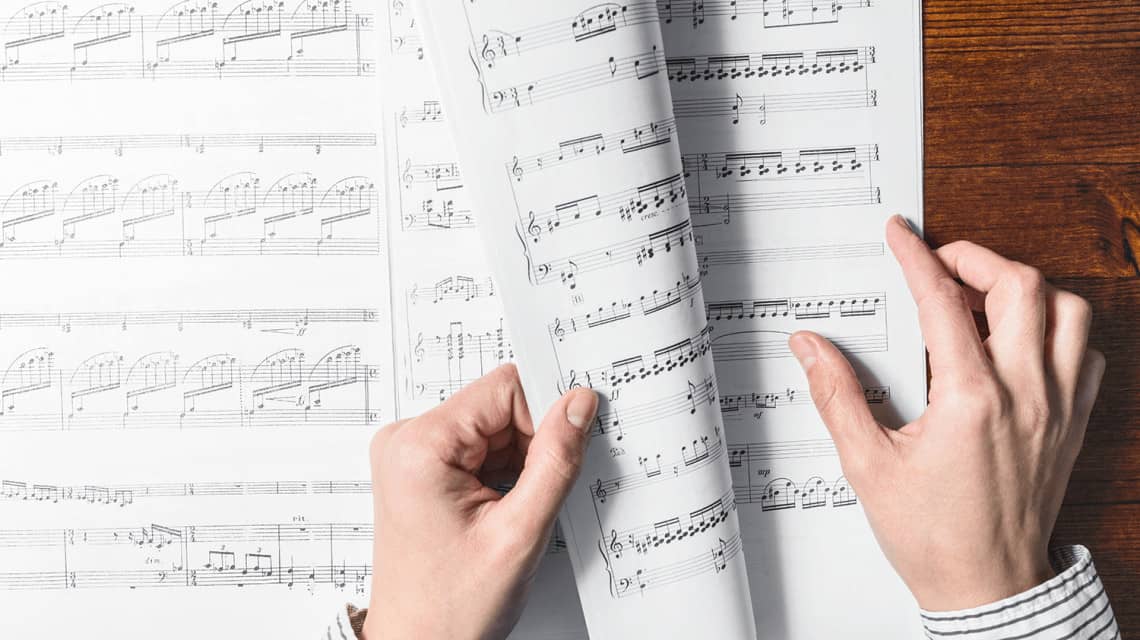
Deutsch-Chinesische Enzyklopädie, 德汉百科
 Traditions
Traditions


进行曲,是一种具有强烈的音乐节奏的音乐形式。最初是为军队的战斗生活所创,用以鼓舞军队的士气,后来也被人们用来表达集体的力量和共同的决心。通常由军乐队所演奏。
进行曲可以用任何拍号来创作,最常被使用拍号是4/4、2/2和6/8拍,一些现代的进行曲也使用了2/4拍。进行曲通常是演奏高音的音群。现代进行曲的速度是120BPM或116BPM(标准拿破仑进行曲速度),但是大多数出殡用的进行曲遵从罗马标准:60BPM。
除了乐器,拍号和速度以外,进行曲的音乐元素是独特的。进行曲一般由几个片断组成,长度通常为16或32个节拍,在前进的过程中至少重复一次。而且普遍有一个强壮和稳定的敲击的旋律,让人想起军鼓。频繁的改变音调,变调到次属音(也频繁的回到主音阶)。 [1]
进行曲的速度是由拿破仑认定的,让他的军队可以快速前进而不至于摔倒。当一个人以每分钟60拍的速度行走时,会难于保持平衡,因为脚停留在空中的时间是普通人的两倍。
Ein Marsch ist ein Musikstück, das durch gleichmäßige metrische Akzente im meist geraden (zweiteiligen) Takt das Gehen oder Marschieren im Gleichschritt erleichtern soll. Deswegen hat der Marsch in der Militärmusik besondere Bedeutung erlangt. Marschmusik bezeichnet die entsprechende Musikgattung. Sie ist mit den Schreittänzen wie Intrada, Pavane und Polonaise verwandt. Die Bezeichnung „Marsch“ stammt von marcare ab, einem erschlossenen Verb des Vulgärlatein, das seinerseits wohl auf das althochdeutsche Wort markon aus der Jägersprache mit den Füßen stampfen, Spuren oder eine Fährte hinterlassen zurückgeht.[1] Damit wird also ein fest auftretendes, gewissermaßen „hämmerndes“ Schreiten bezeichnet.


This table has long been recognized as one of the masterpieces of Jean-François Oeben, cabinetmaker to Louis XV (1710–1774).[1] It was made for Oeben's most important client, the king's mistress Madame de Pompadour (1721–1764). The main charge of her coat of arms, a tower, appears at the top of the gilt-bronze mount at each corner. On the vase at the center of the marquetry top is the ducal coronet (Madame de Pompadour was given the title "duchesse-marquise de Pompadour" in 1752). The top, a tour de force of Rococo design, shows allegorical trophies of her chief interests-architecture, music, painting, gardening, and, last but not least, love-within a scrolling foliate border, executed with dazzling skill in marquetry of etched, stained, and natural mahogany, rosewood, holly, and other woods. Combining an extraordinary design with marquetry of great sophistication, the top is one of the finest panels in all of Oeben's furniture.
Oeben's skills are also apparent in the elaborate mechanism that allows the top to slide back as the large drawer below moves forward. With the drawer open, the table could be used for either reading or writing. A central arched panel, hinged at the front, rises by means of a hidden ratchet support and contains a rectangular panel, which can be rotated and fixed in position so that either side faces forward. One side of this panel is lined with blue moiré silk; the other contains a panel of imitation Japanese lacquer. Flanking this are two flaps, which are inlaid with large tulips overlapping ribbon-bound borders and which cover two shaped compartments veneered with tulipwood. A concealed button releases a shallow drawer below the reading-and-writing panel. One of the most unusual features of this table is the treatment of the legs, each of which is pierced with three openings framed with a gilt-bronze rim. This detail is unique in Oeben's work.
Madame de Pompadour ordered a number of pieces of furniture from Oeben in 1761, but it is not clear that this table was among them. This group was left unfinished on Oeben's death in 1763 and completed by his brother-in-law, Roger Vandercruse (called Lacroix; 1728–1799), whose stamp (R.V.L.C.) along with Oeben's and also "JME," the monogram of the guild, are found on the underside of this table. It cannot be identified in the inventory prepared after Oeben's death, either in the list of ten items awaiting delivery to Madame de Pompadour or in his large stock of completed and partly completed furniture, mainly because of the brevity of the entries.[2] Madame de Pompadour died in April 1764, and the inventory of her possessions presents the same problem.[3] Whether she ever took possession of this table has not been determined.
Oeben made a number of similar tables with sliding tops and drawers, sometimes fitted as combination writing and toilette tables. The related tables by Oeben are in the Musée du Louvre, Paris; the J. Paul Getty Museum, Los Angeles; the Huntington Art Gallery, San Marino, California; the National Gallery of Art, Washington, D.C.; the Rijksmuseum, Amsterdam; the Residenzmuseum, Munich; the Victoria and Albert Museum, London; the Bowes Museum, Barnard Castle, Durham; and the Museu Calouste Gulbenkian, Lisbon.
For such a well-known piece of furniture, this table has a surprisingly vague history until the early twentieth century. It may have belonged to Madame de Pompadour's brother and principal heir, the marquis de Marigny, although there is no evidence to support this idea.[4] In the catalogue of the 1928 sale of Judge Elbert H. Gary's collection,[5] a series of previous owners of the table was listed (the marquess of Tullibardine; Mrs. Mary Gavin Baillie-Hamilton; and Lady Harvey, London, from whom it was acquired by the Paris dealers Lewis and Simmons), but in none of these collections has it been documented. In the twentieth century it was sold twice at public auction, both times fetching record prices for a piece of French furniture: at the Gary sale it was acquired by the dealer Joseph Duveen (1869–1939), and at the sale of the Martha Baird Rockefeller collection in 1971, it was acquired by Jack and Belle Linsky.[6]
[William Rieder, 2006]
Footnotes:
1. For a more detailed discussion of this table and a partial bibliography, see The Metropolitan Museum of Art. The Jack and Belle Linsky Collection in The Metropolitan Museum of Art. New York, 1984, pp. 210–12, no. 128 (entry by William Rieder). See also William Rieder. "A Table for Madame de Pompadour." Magazine Antiques 151 (January 1997), pp. 226–29.
2. Jules Guiffrey, ed. "Inventaire de Jean-François Oeben." Nouvelles archives de l'art français, 3rd ser., 15 (1899), pp. 298–367.
3. Jean Cordey, Inventaire des biens de Madame de Pompadour: Rédigé après son décès. Paris, 1939.
4. Ronald Freyberger. "The Judge Elbert H. Gary Sale." Auction 2, no. 10 (June 1969), pp. 12–13.
5. Judge Elbert H. Gary sale, American Art Association, New York, 21 April 1928, lot 271.
6. Martha Baird Rockefeller sale, Sotheby's, New York, 23 October 1971, lot 711.

小步舞曲(minuet),是一种源于法国的三拍子舞曲,男女对舞。1650年—1750年间主宰了欧洲贵族舞曲。据传源自法国民间的普瓦图勃朗里舞。17世纪时由民间传入宫廷,受到法国国王路易十四的喜好和提倡,因此很快便传遍欧洲,盛行于18世纪。以其中庸的速度和优雅的风格为特色,舞蹈者按社会地位高低为序,讲究礼仪,极为壮观,常表演多种经过精心设计的花样或图案,并于起舞前向舞伴和观众行屈膝礼或鞠躬。早期小步舞曲大都是从第一拍开始,但到了古典时期则变成了从第三拍开始。用于舞蹈场所的小步舞曲,其速度一般都是比较慢的,重音多落在第二拍上;而作为单独演奏的乐曲,其速度通常都会较快。
海顿开始将小步舞曲用于写作奏鸣曲的第三乐章,以后许多音乐家也写作了小步舞曲作品,比较著名的有贝多芬的《小步舞曲六首》和莫札特的《D大调第十七嬉游曲》的第三乐章。已经脱离了舞蹈,成为纯粹的音乐作品,只是仍然采用小步舞的节奏。
Das Menuett (von französisch menuet; italienisch minuetto, menuetto, englisch minuet), aus dem Französischen von „menu pas“ (kleiner, zierlicher Schritt), ist ein alter höfischer Gesellschaftstanz französischen Ursprungs und ein wichtiger Tanz der Barockzeit und Klassik. Es steht im 3⁄4-Takt (selten in 3⁄8 oder 6⁄4), beginnt meistens abtaktig, und besteht meist aus einer Abfolge von 4-, 8- oder 16-taktigen Teilen.



Tänze aus dem Raum, in dem Plattdeutsch gesprochen wird:
Dieser Sprachraum umfasst Schleswig-Holstein, Niedersachsen, Bremen, Hamburg, Mecklenburg-Vorpommern und Teile Nordrhein-Westfalens. Außerdem werden zum Bereich des niederdeutschen Volkstanzes auch Tänze aus Pommern, West- und Ostpreußen sowie den Grenzgegenden von Thüringen und Hessen gezählt.

五线谱是一种由欧洲在17世纪左右完善,并为当今世界广泛采用的记谱法。其本质是利用横线以及线与线之间的间隙,通过各种乐谱符号来记录音乐。阅读及书写五线谱时,遵循从左往右的顺序。
近现代音乐中,会出现固有符号不能满足作曲家所想表达的演奏方法的情况,故五线谱也可以由作曲家自定义并进行解释。
Ein Notensystem (auch Notenlinien oder Notenzeile[1]) ist eine Gruppe von waagerechten, gleichabständigen und parallelen Linien, die in der westlichen Notation der Musik ein Raster für die Notation der Tonhöhe zur Verfügung stellt. Die Notenzeichen werden auf einer Linie oder in einem Linienzwischenraum platziert. Durch einen Notenschlüssel wird jeder Linie und jedem Zwischenraum des Notensystems eine bestimmte Tonstufe zugeordnet. Außerhalb der Linien können Noten mittels Hilfslinien notiert werden.
Die Notenlinie und auch die Zwischenräume werden von unten nach oben durchnummeriert. Die erste Linie ist also die unterste.

 History
History


 Art
Art

 Music
Music
 Review
Review
 Dances
Dances